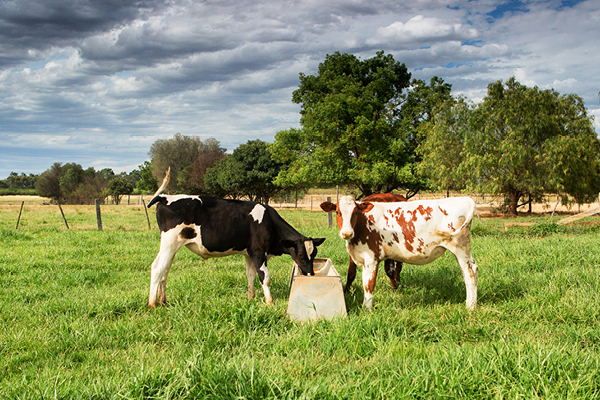Two Priorities To Think About This Spring
The total amount of food that a cow eats on a 24hour cycle, determines not just how much milk that she will produce, but also how fertile and healthy she is. Every farmer aims to fully feed their cows and spring pastures make the job a lot easier. To maximise the temporary advantage of abundant pasture we need to think about two things.
Firstly, there is a competing demand between the need to conserve spring pastures as silage or hay for summer/autumn and optimising milk production today. There have been countless studies on dairy farmer profitability, and they all point to the same conclusion. The most profitable farms, maximise home grown pasture.
Ideally home-grown feed should be 70.0% of the diet and that 70.0% of that home grown feed should be directly grazed.
If you want a cow to eat 15 kg of pasture, then you have to offer her 20kg. Think about your stocking rate. In winter the daily pasture growth rate is under 20kg per hectare per day, so this becomes very difficult. In September average daily growth rates get up to 40-50kg per hectare per day and the pastures should match the cows’ appetite. In October growth rates of 70-100 kg per day are possible and that’s when a surplus occurs. This years’ Milk Price is fantastic. There is no reason to believe hay or grain will be in short supply. Perhaps this might be a good year to allow the cows unrestricted grazing in September and only harvest a genuine surplus later-on.
The second thing that farmers need to consider is the fibre in the diet. Typically pasture tests at 35-45% N.D.F. fibre in early spring and most grain or pellet rations test at about 17-22% N.D.F. depending on ingredients. N.D.F. stands for Neutral Detergent Fibre, not Non-Digestible Fibre as some people mistakenly think. N.D.F. fibre is not a measure of effective fibre. Effective fibre needs to be chewed and September pastures are as soft as butter. N.D.F. refers to the test performed (neutral detergent) on the pasture.
Fibre classified as high in N.D.F. can be digested, but slowly, and is a measure used to predict “Gut Fill”. Consider this, a bowl of porridge has about the same energy as a bowl of jelly, but you can eat five bowls of jelly for every bowl of porridge. A cow can eat approximately 1.2 % of her body weight in N.D.F. fibre. So, a 500kg cow would be full once 6.0kg of N.D.F. fibre has been eaten. The lower a foods N.D.F. the more that they can eat but we must remember that the average N.D.F. in a cows’ guts needs to be above 30%. If it isn’t the cows’ rumen will become acid, butterfat percentage will fall, and she might even get sick.
A 500-kilogram cow could eat 15 kg D.M. of 40 % N.D.F. pasture before she reached 6.0 kg of N.D.F. fibre. She could eat 33 kg of 20% N.D.F. grain or pellets before she ate 6.0 kg of N.D.F. fibre, but she would probably die of acidosis before she got there. Once we get an understanding of how N.D.F. works as above, then we can think about how to manipulate the cows’ diet to maximise milk production. We know that the average N.D.F. of the diet must be above 30% but it doesn’t need to be as high as 40% like in the pasture.
We can safely use crushed grain or pellets as a tool to dilute the fibre in pasture and increase overall intake up until the point where we are under 30% overall N.D.F. The size of your cows determines how much grain can be fed to optimise milk production. Your Reid Stockfeeds representative can be of assistance here.
